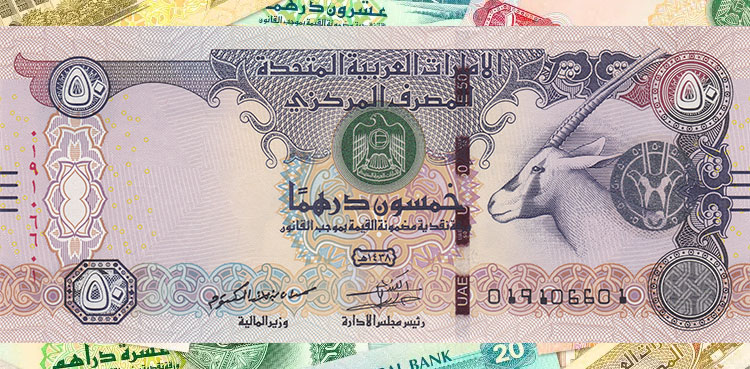KARACHI, July 23, 2025 – The UAE Dirham continued its robust performance against the Pakistani Rupee today, trading at 77.57 PKR in the open market, reflecting the sustained strength of the Emirates’ economy and the growing economic ties between Pakistan and the UAE.
The current exchange rate represents a notable position for the Dirham, which has maintained relative stability throughout 2025. The highest UAE Dirham to Pakistani Rupee rate was recorded on July 14, 2025, when 1 Dirham was worth 77.7964 Pakistani Rupees, indicating the currency’s consistent performance near its recent peaks.
Understanding Currency Valuation
The valuation of the UAE Dirham against the Pakistani Rupee is determined by multiple interconnected factors that reflect the economic fundamentals of both nations. Exchange rates are primarily driven by supply and demand dynamics in the foreign exchange market, influenced by trade balances, foreign investment flows, and economic indicators.
Pakistan’s substantial trade relationship with the UAE, where the Emirates serves as one of the country’s largest trading partners, creates consistent demand for Dirhams. The significant Pakistani expatriate community in the UAE, numbering over 1.6 million, generates substantial remittance flows that further influence the exchange rate dynamics.
Central bank policies in both countries also play crucial roles in determining currency values. The UAE Central Bank’s monetary policy, aligned with the US Federal Reserve due to the Dirham’s peg to the US Dollar, provides stability that attracts international investors and strengthens the currency’s position.
Economic fundamentals such as GDP growth rates, inflation levels, current account balances, and foreign exchange reserves create the underlying framework for currency valuation. The UAE’s superior performance in these metrics compared to many regional economies contributes to the Dirham’s strength.
UAE’s Economic Masterstroke: Diversification Success
The UAE’s remarkable economic policies deserve particular recognition for creating the foundation of the Dirham’s strength. The UAE’s economic diversification strategy continues to yield results, with the non-oil sector expected to contribute significantly to overall GDP growth in 2025.
The Emirates has executed one of the most successful economic transformation stories in the modern era. The UAE is projected to experience robust growth, primarily driven by the non-oil sector, with a growth rate of 4% to 5% in this key sector, demonstrating the effectiveness of long-term strategic planning.
Non-oil sectors, particularly tourism, healthcare, and finance, are expected to expand significantly, fueled by increased foreign investments and a growing population. This diversification has created multiple revenue streams that insulate the economy from oil price volatility.
The UAE’s visionary leadership has invested heavily in creating world-class infrastructure, establishing free zones, and developing a business-friendly regulatory environment that attracts global companies and investors. Dubai’s emergence as a global business hub and Abu Dhabi’s focus on sustainable development exemplify this strategic approach.
The country’s commitment to innovation and technology is evident in its substantial investments in renewable energy projects, artificial intelligence initiatives, and smart city developments. The UAE is emphasizing its vision and national plan for a diversified, knowledge-based economy away from dependence on oil resources.
Furthermore, the UAE’s strategic geographic location, connecting Asia, Africa, and Europe, has been leveraged brilliantly to become a global logistics and trade hub. The success of Dubai’s ports and airports in becoming regional leaders demonstrates this strategic advantage.
Implications for Pakistan-UAE Relations
For Pakistani businesses and individuals, the current exchange rate presents both opportunities and challenges. Pakistani exporters benefit from the strong Dirham when selling goods and services to the UAE market, as their revenues translate to higher Rupee values. However, Pakistani importers and those planning investments in the UAE face higher costs due to the unfavorable exchange rate.
The Pakistani government continues to work on strengthening bilateral economic ties with the UAE through various trade agreements and investment protocols. Enhanced cooperation in sectors such as renewable energy, logistics, and technology could help improve Pakistan’s economic fundamentals and potentially influence future exchange rate dynamics.
The remittances from Pakistani workers in the UAE remain a crucial source of foreign exchange for Pakistan, and the current rate ensures that families receiving these transfers benefit from the Dirham’s strength.
Understanding Both Currencies
UAE Dirham (AED): Introduced in 1973, the UAE Dirham is the official currency of the United Arab Emirates. It is subdivided into 100 fils and has been pegged to the US Dollar since 1997 at a rate of approximately 3.67 AED to 1 USD. This peg provides stability and predictability for international trade and investment. The Dubai International Financial Centre (DIFC) and Abu Dhabi Global Market (ADGM) have further enhanced the Dirham’s international credibility by establishing world-class financial regulatory frameworks.
Pakistani Rupee (PKR): The Pakistani Rupee has been the official currency of Pakistan since 1947, following the country’s independence. It is subdivided into 100 paisa and operates under a managed float exchange rate system overseen by the State Bank of Pakistan. The Rupee’s value fluctuates based on market forces, economic indicators, and central bank interventions. Pakistan’s central bank regularly adjusts monetary policy to maintain price stability and support economic growth, though the currency has faced pressure in recent years due to various economic challenges.
The current exchange rate of 77.57 PKR per AED reflects the relative economic strengths of both nations and serves as a barometer of their bilateral economic relationship. As both countries continue to strengthen their partnership across various sectors, currency dynamics will remain an important indicator of economic cooperation and development.
This story reflects market conditions as of July 23, 2025, and exchange rates are subject to continuous fluctuation based on market forces.


Leave a Comment